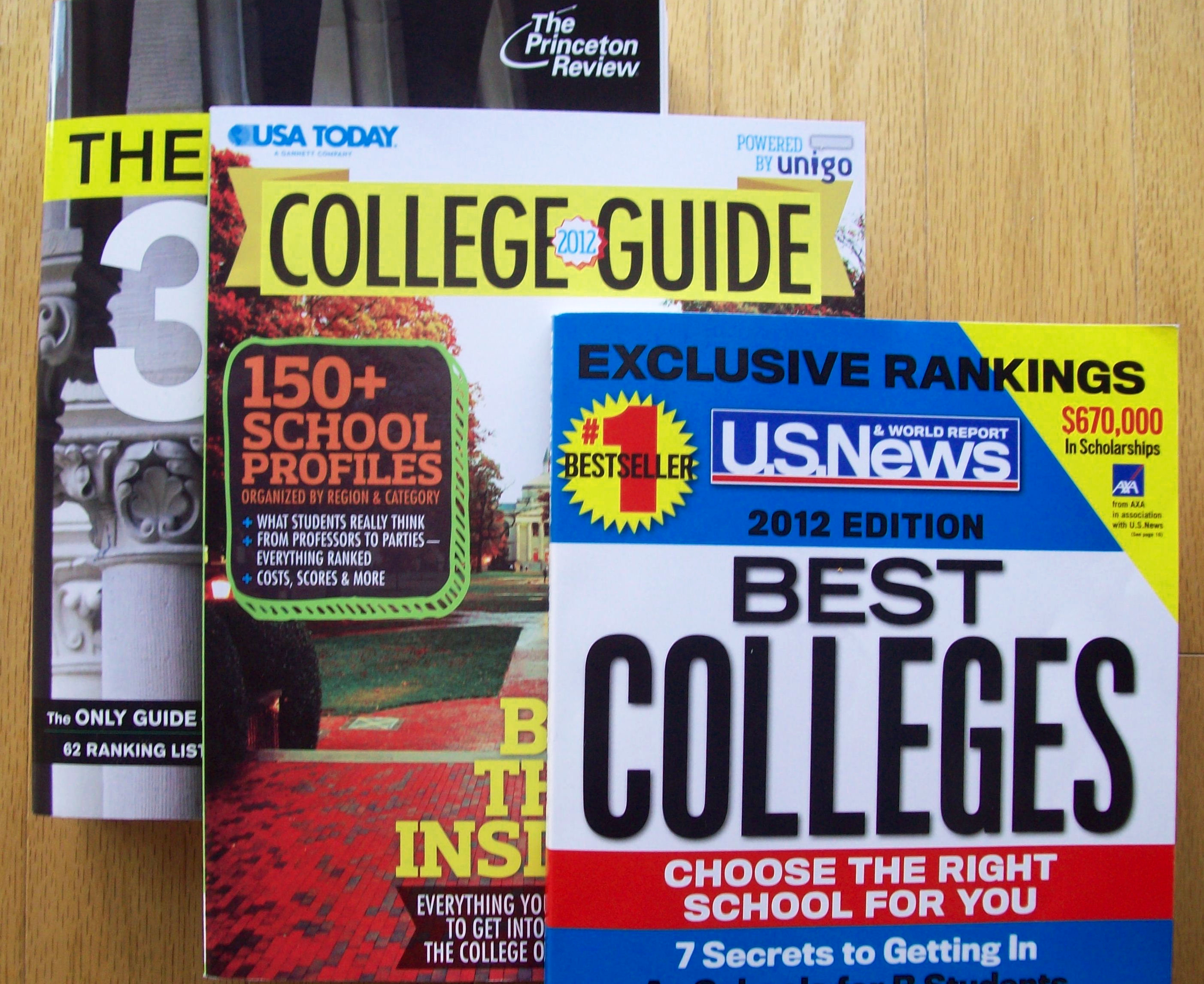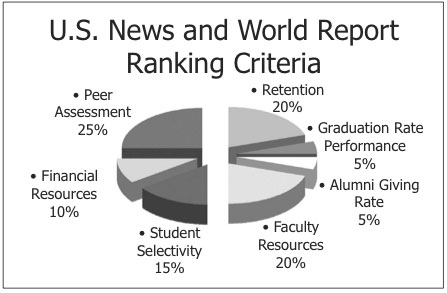Some Colleges Do Not Neatly Fit College Rankings

 Last week I visited a school, Philadelphia University (aka “PhilaU”), which is difficult to consider within the context of college rankings. PhilaU has some very interesting programs that combine design, engineering and business education as well as a five-year Physician’s Assistant degree.
Last week I visited a school, Philadelphia University (aka “PhilaU”), which is difficult to consider within the context of college rankings. PhilaU has some very interesting programs that combine design, engineering and business education as well as a five-year Physician’s Assistant degree.
There are some traditional majors; you can earn a Bachelor’s degree in Biology, Chemistry, Communications or Psychology as you would at a liberal arts college or a small or mid-sized university. But the rest of the programs are where PhilaU separates itself from other small (less than 3,000 undergraduates) schools.
The pre-professional options available at PhilaU are incredible. You can combine, for example, a Bachelor’s degree in Psychology with Masters programs in Community and Trauma Counseling or Occupational Therapy. You can receive degrees in several design programs focused on the built environment (Architecture, Landscape Architecture, Historic Preservation, being only three examples), the fashion industry, textiles (inside and outside of the fashion world), Industrial Design or Graphic Communications. You can also study Construction Management, or Mechanical Engineering. Or you can earn a business-related degree in Accounting, Finance, International Business, Management or Marketing. So, PhilaU is not a liberal arts school; the majority of degrees are in the pre-professional specialties and it has relatively few (around 700) graduate students. Nor is it an art and design school; it does not offer majors in the fine arts such as ceramics, painting, jewelry making, photography or sculpture. It is not a research university; there are only two doctoral programs, a Clinical Doctorate in Occupational Therapy and a PhD in Textile Engineering. Nor is it a business school like Babson, Bentley or Bryant.
 Since PhilaU is none of these things it is ranked in a category: Regional Universities–North, a catch-all for schools located from Maine to Washington D.C. that are neither liberal arts colleges nor research universities nor specialty schools such as colleges of art and design or business. Some of these schools have more than 10,000 undergraduates such as West Chester University (PA), Towson University (MD) and Rowan University (NJ). They offer most of the majors that you will find at much larger schools, although they will have more comprehensive teacher education programs. These schools were founded as “normal schools” aka teachers colleges. The freshmen retention and graduation rates are improving because they attract students who could not gain admission or were scared off by larger public schools. Or they could not afford the private university that they wanted to attend. Yet because these schools have attracted better students they have risen in U.S. News’ college rankings. They have also risen in the esteem of college-bound students and their parents. But other Regional Universities such as Alfred University (NY) have fewer undergraduates than PhilaU, and they, like PhilaU, have their own specialties. For example, you can study Ceramic Engineering at Alfred. But you cannot get a degree in this subject at other small or mid-sized schools, even those that are oriented towards engineering such as Case Western (OH), Kettering (MI), Lehigh (PA) or Rose-Hulman (IN). You have to go to a much larger school such as Rutgers-New Brunswick. What happens to schools like Alfred or PhilaU in these college rankings?
Since PhilaU is none of these things it is ranked in a category: Regional Universities–North, a catch-all for schools located from Maine to Washington D.C. that are neither liberal arts colleges nor research universities nor specialty schools such as colleges of art and design or business. Some of these schools have more than 10,000 undergraduates such as West Chester University (PA), Towson University (MD) and Rowan University (NJ). They offer most of the majors that you will find at much larger schools, although they will have more comprehensive teacher education programs. These schools were founded as “normal schools” aka teachers colleges. The freshmen retention and graduation rates are improving because they attract students who could not gain admission or were scared off by larger public schools. Or they could not afford the private university that they wanted to attend. Yet because these schools have attracted better students they have risen in U.S. News’ college rankings. They have also risen in the esteem of college-bound students and their parents. But other Regional Universities such as Alfred University (NY) have fewer undergraduates than PhilaU, and they, like PhilaU, have their own specialties. For example, you can study Ceramic Engineering at Alfred. But you cannot get a degree in this subject at other small or mid-sized schools, even those that are oriented towards engineering such as Case Western (OH), Kettering (MI), Lehigh (PA) or Rose-Hulman (IN). You have to go to a much larger school such as Rutgers-New Brunswick. What happens to schools like Alfred or PhilaU in these college rankings?
 They get ranked down. The demanding majors that set them apart from other schools bring down the freshman retention rate as well as the graduation rate. Worse, because these are private schools, the six-year graduation rates will be low. It can too expensive to “back-track” from one major to another at one of these schools if the demanding program you started proves too difficult to finish and you don’t have a similar program to move into. Alfred University, according to the 2015 U.S. News Best Colleges Guide, ranks only 38th among Regional Universities-North. It loses just over a quarter of a freshman class. Nearly 40 percent of the freshmen who entered in 2007 had not graduated six years later. PhilaU fares poorly in these college rankings, too. It ranked 79th while having a longer list of demanding pre-professional majors than Alfred. It lost about a quarter of the freshmen who entered last year. Only 58 percent of the freshmen who entered in 2007 had a degree six years later. Does Alfred or PhilaU deserve the lower “ranking” within such a broad, catch-all group? No, and the low ranking serves as a “punishment” for standing out by trying to offer programs that fulfill a demand whether it be from students seeking an education or industry looking for future employees. A Ceramic Engineering graduate from Alfred who completes the degree with a ‘B’ average or better will have their choice of job offers. So will the graduate of the Occupational Therapy, Physicians Assistant, Textile Engineering and several other programs at PhilaU.
They get ranked down. The demanding majors that set them apart from other schools bring down the freshman retention rate as well as the graduation rate. Worse, because these are private schools, the six-year graduation rates will be low. It can too expensive to “back-track” from one major to another at one of these schools if the demanding program you started proves too difficult to finish and you don’t have a similar program to move into. Alfred University, according to the 2015 U.S. News Best Colleges Guide, ranks only 38th among Regional Universities-North. It loses just over a quarter of a freshman class. Nearly 40 percent of the freshmen who entered in 2007 had not graduated six years later. PhilaU fares poorly in these college rankings, too. It ranked 79th while having a longer list of demanding pre-professional majors than Alfred. It lost about a quarter of the freshmen who entered last year. Only 58 percent of the freshmen who entered in 2007 had a degree six years later. Does Alfred or PhilaU deserve the lower “ranking” within such a broad, catch-all group? No, and the low ranking serves as a “punishment” for standing out by trying to offer programs that fulfill a demand whether it be from students seeking an education or industry looking for future employees. A Ceramic Engineering graduate from Alfred who completes the degree with a ‘B’ average or better will have their choice of job offers. So will the graduate of the Occupational Therapy, Physicians Assistant, Textile Engineering and several other programs at PhilaU.
The shame is that schools such as PhilaU have tried to separate themselves through innovations in their academic programs, yet those initiatives are not something you will learn about in college rankings. They have often come about based on the advice of executives and professionals with the power to influence and hire new graduates. It becomes up to the school, often at great expense, to convey that message. PhilaU went in this direction in their advertising campaign, headed ‘Power to Do.’ One would hope that a college would be able to put the money it spends on advertising into academics or student-related benefits. On the other hand so many schools benefit from the “free advertising” generated from college rankings, and exploit it to the max. Given these circumstances, I cannot blame a college for adding the marketing muscle it needed to get the students it wanted. In the case of PhilaU there is a message worth learning about, and a school that deserved my time.
Original Article by Ed Quest: http://www.educatedquest.com/colleges-neatly-fit-college-rankings/

